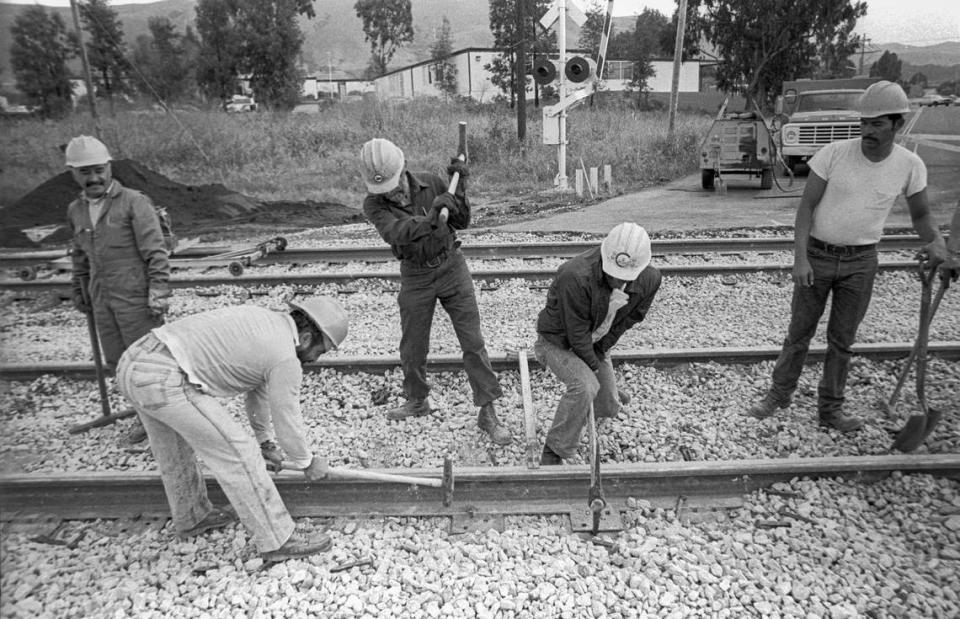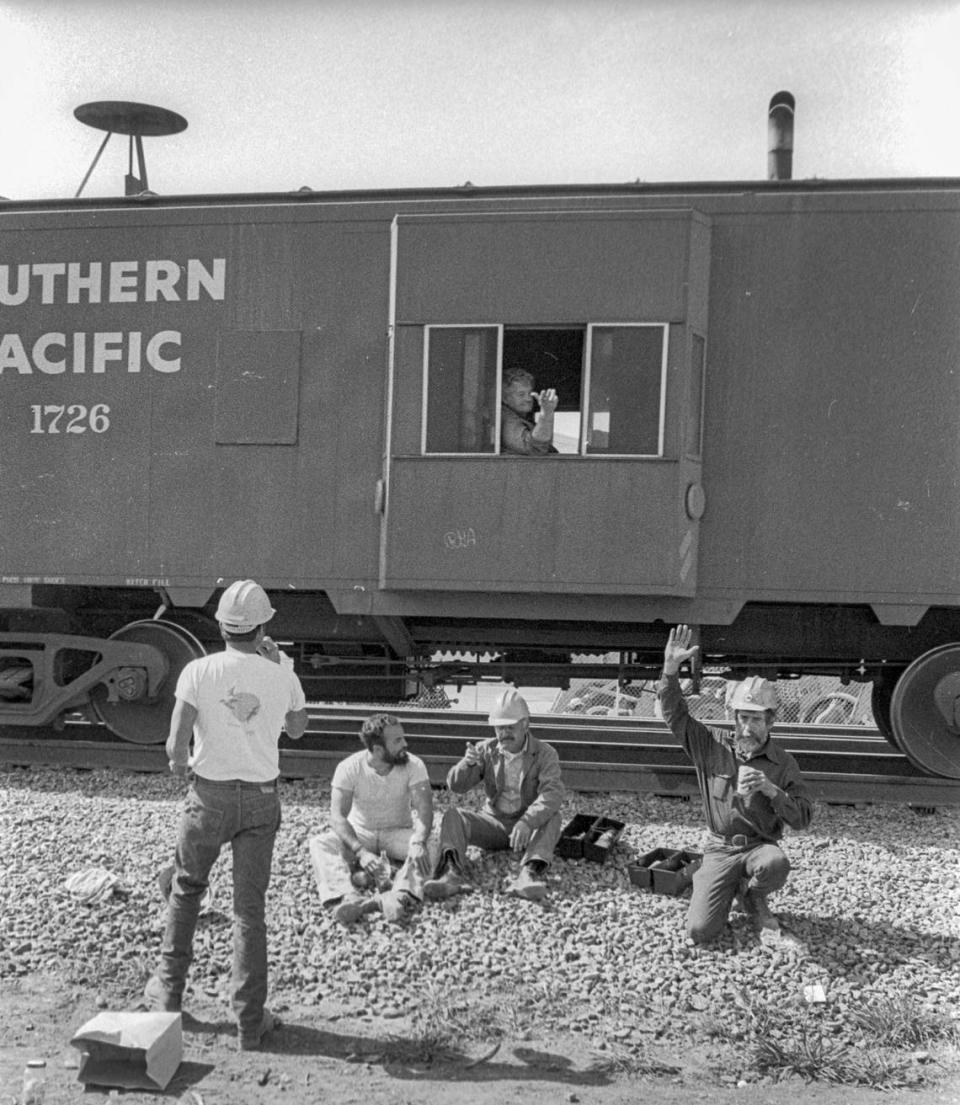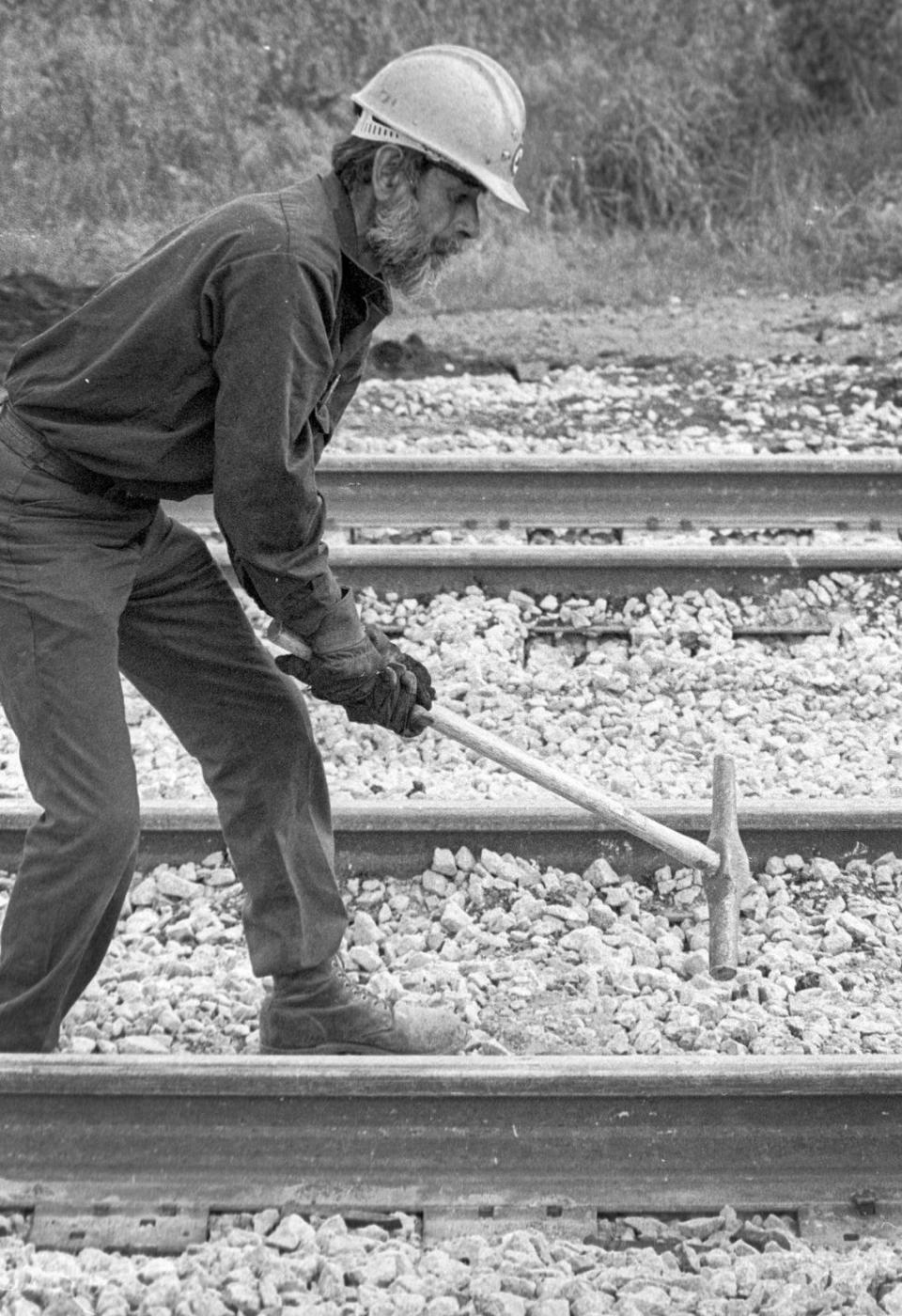It wasn’t so long ago that workers still hammered railroad spikes by hand. Here’s a look
Here are a few railroad practices that were common in the 1980s but not today.
Freight trains used to have a staffed caboose as the last car for safety, now replaced by an electronic device. Cabooses are now museum pieces.
Railroad work crews who replaced ties and rail by hand now have been largely replaced by a mechanized process.
Much of the north-south freight rail traffic now travels through the Central Valley rather than via the hilly and curvy Coast Line.
And Southern Pacific has been taken over by Union Pacific Railroad.
Here is a brief un-bylined story that ran in the then Telegram-Tribune with a set of feature photos from Tony Hertz, published March 15, 1984.

‘Gandy dancers’ repair railroad lines in SLO
Southern Pacific “gandy dancers” are steaming full speed ahead with the back-breaking work of replacing 140,000 ties on the track from San Luis Obispo to Guadalupe.
Gandy dancers are members of a railroad section gang, in this case, a “tie gang.” The slang term comes from railroad workers who used tools from the Gandy Manufacturing Co., of Chicago.
Although there are more machines available now to help railroad workers, spikes are still hammered in by hand with the spike driving maul, just as they were when the coastal line was completed at the turn of the century.
After the $3 million tie-replacement program is finished, another crew will come in and replace the ballast, or gravel that stabilizes the wooden ties.

San Luis Obispo Trainmaster William Giles said the last time the line received a major overhaul was 1969.
Also included in the maintenance program was the repaving of street crossings at Orcutt Road, Foothill Boulevard and Marsh Street.
The repair program had been planned for some time, said Tom Buckley, vice president of public information in Los Angeles. It may have been moved up slightly because of the increased traffic, he said.
Intermodal traffic, or truck trailers or containers on flat cars, increased 40 percent in 1983 over 1982, said Trainmaster Giles.
Buckley said overall traffic is up about 20 percent so far this year. The biggest increases have been in new cars, car parts and lumber.


